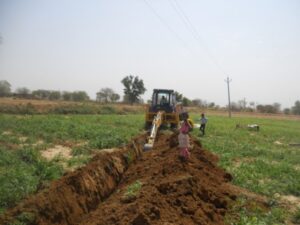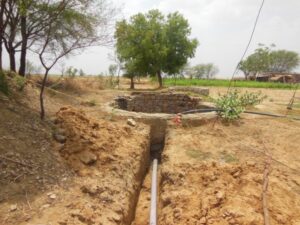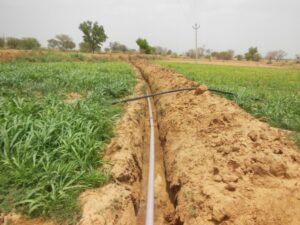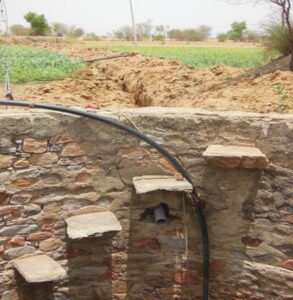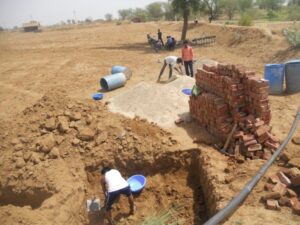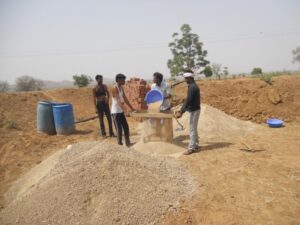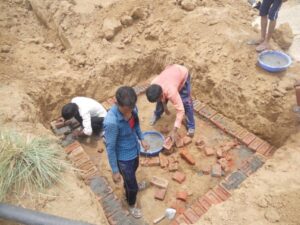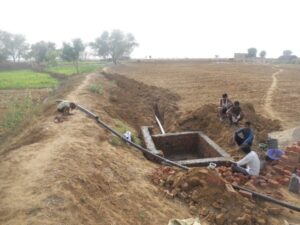Well Recharge Through Rain Water Harvesting
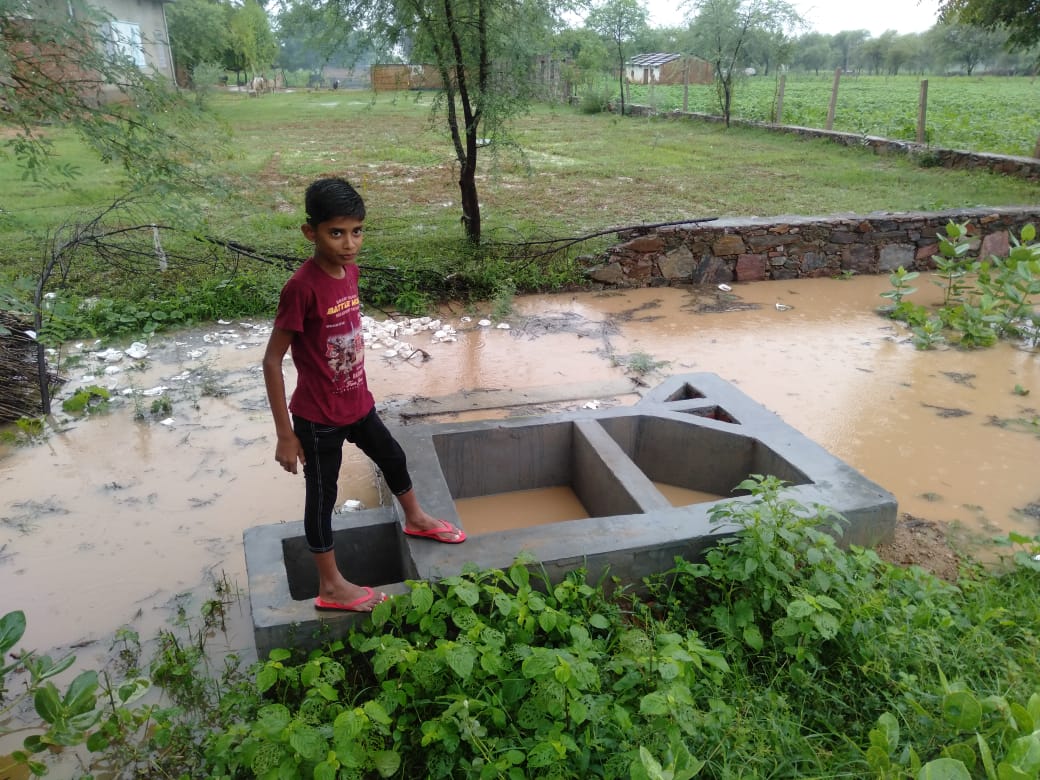
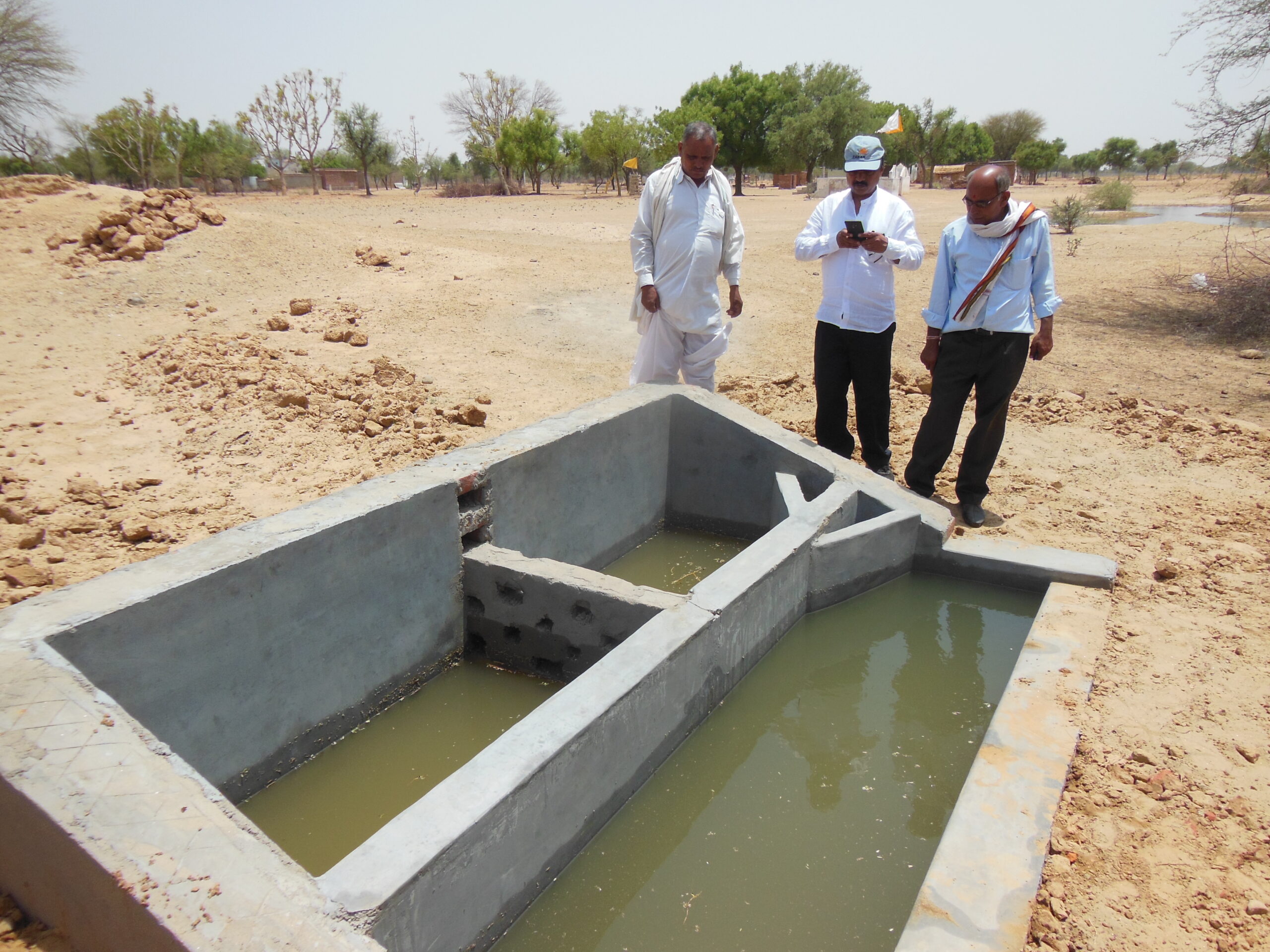
One area of most immediate need for a majority of rural villages is access to water for irrigation and drinking. Approximately 70% of Rajasthan’s work force is engaged in agriculture and allied activities and the vast majority of these farmers depend on groundwater for irrigation. Unfortunately, 80% of Rajasthan exists in the critical category for water over-exploitation. Groundwater levels in Rajasthan have been declining by one foot each year which indicates that current rates of water extraction are not sustainable. This spells disaster for Rajasthan’s farmers and their families who will not have the required irrigation due to dry wells and low water tables.
KIGS has pioneered the promotion of innovative watershed development programs in Rajasthan since 1980. Over the years we have implemented various water harvesting projects such as roof top rain water harvesting, Contour bunding, land levelling, construction of new ponds, anicut, etc.
KIGS has piloted individual well recharge projects with villages, however, if well recharge is done in quantities in a particular area then the whole area could become water sufficient. This will help rural people to live their lives with less debilitating uncertainty, and more dignity.
The use of direct recharge technique for artificial recharge is a simple and widely used method for ground water recharge. This is an innovative concept to increase water availability in wells of low water table areas through recharging of wells by diverting surface water. Direct well recharge technique combines common rainwater harvesting practices with innovative practices to replenish ground-tables and aquifers with naturally filtered rainwater. It is a sustainable, cost-effective and eco-friendly method. A recharge water pan (pit) of proposed size 6x7x4 feet (in most cases) is constructed in the farmers’ fields to collect the surface runoff during rainy season. During the rains, rainwater from the field is directed to this collection pit. The collection tank is a two chamber unit with filter. The rainwater enters the collection pit and via a series of trenches or piping goes to the well thus going back underground to replenish the water tables and aquifers. The recharge pits help to increase water-output of wells, yields better water-quality of wells and it is a very cost-effective technology.
The innovativeness of the project lies in the fact that most of the rain water harvesting techniques use roof top rain water which has a limited catchment area and the storage tank also has limited harvesting capacity. But this technique uses the farmers’ fields as the catchment areas and the aquifers of the wells as storage tanks. During rains when water passes through a field it not only has the water from that particular field but water coming from upper reaches of the catchment, as a result the quantity of water which can be harvested becomes unlimited. In addition, another important benefit includes the recharge of adjoining wells.
In implementing this project, KIGS makes special efforts to mobilize the community on pre-project management issues such as awareness generation, social mobilization, village meetings, base line survey and household contact to establish rapport building in the project villages. Post-project management issues includes training farmers about cleaning the chamber of recharge pans from sand and silt as well as routine maintenance of the well. The various Village Development Committees (VDC) act as a nodal agency for planning and implementation of project. Furthermore, the village governance organization (Gram Panchayat) and other government agencies are stakeholders who would upscale the project in future.
Outcomes :
• Significant increase in ground water table of the open wells.
• Increase in the number of hours of diesel engine to pump well water.
• Less time during recharging of well after pumping water from well.
• Area under irrigation increased.
• Life saving irrigation for Kharif crop is available.
• Yield of crops increased.
• Develop in-situ moisture and water conservation in field.
• At least 40% income increased from agriculture of the beneficiary farmers.
• Water quality improves – hard/saline water turns soft, fluoride level falls.
• Build capacity of community on ground water recharge and rain water harvesting.
• Community members become members of village level committee.
• Cultural events and educational events to introduce project to be conducted in villages.
• Community members selected by VDC for works.
• VDC is actively involved in planning and implementation of project.
• People from project villages and adjoining villages demanded for the work.
• Block/district administration convinced to start efforts to include this activity under their own program.
The potential of storing rain to meet water demand is tremendous in light of the looming water crisis. One Gram Panchayat has approximately 100 wells so in 3 years we can cover 50% of the wells. If 50% of wells are recharged then all the wells of the whole area would recharge because one well may recharge its adjoining 2-3 wells if they are in downstream. By this time the well recharge activity would also be widely propagated and people would start demanding it from the government and if possible also pay for it. The project is easily scalable if more people are interested in doing it. Thus we can say that well recharge is one of the most sustainable activities in water conservation.
Case Study

Hazari Lal Bairwa lives in Narsinghpura village of Theekariya Gujaran gram panchayat of Chaksu tehsil, district Jaipur. Hazari Lal lives in a joint family with 2 other brothers, the family has 15 members. The family is engaged in agriculture and animal husbandry activities. They have 20 bigha of land (4 bigha = 1 hectare) and an open well (with boring in it) which is 90 feet deep. Before well recharge, the water level in the well was only 2 feet and the boring motor would run for only 15 minutes. This was sufficient to grow only green fodder for the animals. The water was depleting continuously so the income from agriculture was also going down. The agriculture on 20 bigha of land was fully dependent on monsoon rains. If the rains are not on time then the family has to buy even the food grains from the market.
In April 2019 Hazari Lal came in contact with KIGS officials and was motivated to install well recharge structure on his well. He has never heard of “well recharge” in his life and was confused that the well which used to give him water can also accept rain water from the fields. However, the family agreed to it and construction started in June 2019. In July rains started and water started coming in his field, which was collected in a storage tank and finally through underground pipeline it was directed in the well. It was a dream for Hazari Lal to see water going in the well. The catchment of water was so good that the well overfilled two times. It was a new thing for the villagers to see a dry well over filling by rainwater, this news spread like wild fire and lots of people started coming to see his well. Now the well has 8 feet water and the boring time has increased from 15 minutes to 2 hours. This year he has grown wheat, barley, mustard and chana in his 6.5 bigha of land. He is expecting fresh income from fodder, mustard and chana.
By now Hazari Lal is fully convinced that in 2-3 years his well will have sufficient water and then he will be able to do farming in all 20 bigha of land. He is motivating his fellow farmers to go for well recharge structure. He is indebted to Kumarappa Sansthan for introducing him to this new technology.









